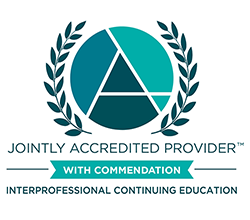
The Medication Assisted Treatment Education (MATE) Act requires dental practitioners to meet specific training requirements tied to their initial or renewal DEA registration. Beginning on June 27, 2023, practitioners will be required to check a box on their online DEA registration form—regardless of whether a registrant is completing their initial registration application or renewing their registration—affirming that they have met the new training requirement.
This 8-hour self-paced video and reading training provides a comprehensive understanding of pain management in dental practice. The course will cover the importance of an evidence-based approach to patient management rather than a one size fits all strategy. Participants will learn about the role of opiates and alternatives in pain management, the legal and administrative issues with opiate prescribing, and plans to improve the safety of opiate use. DEA MATE Act
Register for Upcoming Sessions
January 1, 2024 12:00 am - June 30, 2024 11:59 pm
All times for all events are in local Central Time.
Pre-recorded Zoom Webinar
Course Number: CF4419
Steps to Complete the Required Training
- Complete reading assignments. 1.25 hours.
- View four recorded video presentations. 6.75 hours.
- Fill out the attestation, quiz and course evaluation after completing Steps 1 and 2.
Step One – Complete the Reading Assignment. 1.25 hours.
Please choose from the options provided, or feel free to choose other relevant studies, reference materials, or websites that interest you.
- Association Between State Opioid Prescribing Limits and Duration of Opioid Prescriptions from Dentists
- Challenges experienced in the dental care of persons with special needs: A qualitative study among health professionals and caregivers
- Trends in dispensed prescriptions for opioids, sedatives, benzodiazepines, gabapentin, and stimulants to children by general dentists, 2012–2019
- Telemedicine Use and Quality of Opioid Use Disorder Treatment in the US During the COVID-19 Pandemic
- Change in Pediatric Adenotonsillectomy Postoperative Visit Patterns After Opioid food and Drug Administration Warning
- Pain Management in Infants, Children, Adolescents, and Individuals with Special Health Care Needs
- New study examines impact of race on chronic pain disparities - Monday, March 13, 2023
- Stanford Pediatric Pain Pocket Reference
- The National Center for Drug Abuse Statistics is an optional resource
Step Two – View the four recorded video presentations. 6.75 hours.
Link to our Media Channel and view the videos
- Overview video
- Pediatric video
- Pharmacy video
- Referral video
Step Three – Fill out the attestation, quiz and course evaluation after completing Steps 1 and 2.
Link to the attestation, quiz and course evaluation.
How to receive CE credit
- Register and pay for the course.
If you would like Continuing Dental Education credit and Course Completion documentation for the course, you must make a non-refundable registration payment. Once you have registered, there is no refund. - Complete the readings, view four videos, and complete the attestation, quiz and course evaluation.
- Receive a Certificate of Completion via email.
A Course Completion Certificate will be mailed to you approximately 72 business hours after you complete Step 3. If you do not see the email with three-business days of completing the attestation document, check your spam and trash folder before emailing [email protected]
Learn How To
Learning Objectives
- Conduct and in-depth analysis of the current state of the opioid crisis in the United States, including its causes, impact, and relevant statistics
- Effectively manage pain and optimize opioid prescribing practices specifically for pediatric patients
- Evaluate pain management prescribing practices, taking into account the potential interactions and considerations with patients' other medications
- Develop a comprehensive communications and referral system to address the needs of patients at risk of opioid use disorder, promoting early intervention and appropriate support
Course Overview
Presented by Angie Rake, DDS
- Consider current thinking in substance use disorders (SUD)
- Discern how SUD currently defined
- Discuss current statistics of SUD in the US
- Recognize the top four substances of misuse in the US and how they impact healthcare-related procedures and oral surgeries
- Analyze special considerations of patients with opioid use disorder
- Understand current uses and trends in Buprenorphine
- Asses special considerations agreements when prescribing opioids
- Communicate with patients and medical specialists regarding pain management
Identification and Management of Opioid and Substance Use Disorders in Pediatric Patients
Presented by Scott Hadland, MD
- Describe alcohol and drug use in early adolescence with progression to substance and opioid use disorders in late adolescence
- Discuss the neurocognitive effects of addictive substances on the developing adolescent brain
- Discuss patterns, trends, epidemiology, and contributing factors to opioid and other substance use/abuse among the child and adolescent population
- Highlight similarities and differences, and discuss challenges of adolescents with co-occurring substance use and psychiatric disorders
- Discuss how your team can identify and manage substance use and withdrawal syndrome behaviors in patients
- Recognize and deliver safe dental and medically-related procedures for children and adolescents who are actively using alcohol and/or other drugs
- Deliver safe care to children and adolescents currently receiving treatment for substance and opioid use disorders
- Develop strategies for brief interventions, referrals, and resources for children, adolescents, parents, and caregivers
Mixing Common Prescriptions with Pain Management Medication: Insights from Your Local Pharmacist
Presented by Ashley Duggins, PharmD
- Identify the ten most prescribed medications in adults and pediatrics
- Recognize common oral and overall health associated with certain disease states
- Discuss the ten most prescribed medications and what types of pain management medications are most effective
- Recognize complications that prescribed medications can cause regarding oral and overall health
- Identify limitations various federal mandates have on clinicians' medication prescribing
- Understand the role of a clinical pharmacist in improving oral and overall health
- Develop a cheat sheet with the right pain medication choices for patients with specific disease states
What Happens After You Identify and Refer Patients with Opioid and Other Substance Abuse Disorders
Presented by Evan Rosenthal, LPCC, LADC
- Evaluate best practices in referral by analyzing case studies
- Implement screening tools, such as the Opioid Risk Tool (ORT) or the Screener and Opioid Assessment for Patients with Pain (SOAPP), to identify potential cases of opioid abuse
- Recognize signs of opioid abuse, including changes in behavior or mood, frequent requests for early refills or lost prescriptions, and evidence of drug-seeking behavior
- Utilize prescription drug monitoring programs (PDMPs) to track patients' prescription histories and identify potential cases of opioid abuse or diversion
- Refer patients with suspected addiction to specialists, such as psychiatrists, addiction medicine physicians, or substance abuse counselors, for evaluation and treatment
- Implement medication-assisted treatment (MAT) for patients with substance abuse disorders
- Identify how teens, young adults, adults, and seniors with substance abuse disorders may present in the dental clinic
- Evaluate the prevalence of substance abuse disorders among LGBTQ+ patients
- Compare and contrast substance abuse trends in urban versus rural areas
- Provide educational resources for providers, patients, families, and caregivers related to opioid abuse and addiction
- Assess what happens after a referral and identify what providers should know
Course Handouts
- Duggins - Mixing Common Prescriptions with Pain Management Medication
- Hadland - Identification and Management of Opioid Substance Use Disorders in Pediatric Patients
- Rake - Substance Use and Post-Operative Pain Management
- Rosenthal - Teen Health Screen CRAFFT 2.1
- Rosenthal - CAGE-AID Questionnaire
- Rosenthal - Opioid Risk Tool
- Rosenthal - Real World Strategies for Identifying & Referring Patients with Opioid Use Disorders
- Rosenthal - Screener and Opioid Assessment for Patients with Pain
Training Methods
Illustrated lectures, case studies via recorded Zoom webinar (presented June 9, 2023).
Reading assignments.
In support of improving patient care, this activity is being planned and implemented by The National Center for Interprofessional Practice and Education Office of Interprofessional Continuing Professional Development (OICPD) and the University of Minnesota School of Dentistry.
The National Center OICPD is jointly accredited by the Accreditation Council for Continuing Medical Education (ACCME), the Accreditation Council for Pharmacy Education (ACPE), the American Nurses Credentialing Center (ANCC), the Association of Social Work Boards (ASWB) Approved Continuing Education (ACE) program, and the Athletic Training Board of Certification, Inc. (BOC) to provide continuing education for the healthcare team.
The National Center OICPD will award ACCME AMA PRA Category 1 CreditsTM, ANCC nursing contact hours, ACPE contact hours (CEUs) for pharmacists and pharmacy technicians, ASWB continuing education credits, AT BOC Category A hours to attendees of this program. This activity was planned by and for the healthcare team, and learners will receive Interprofessional Continuing Education (IPCE) credits for learning and change.

